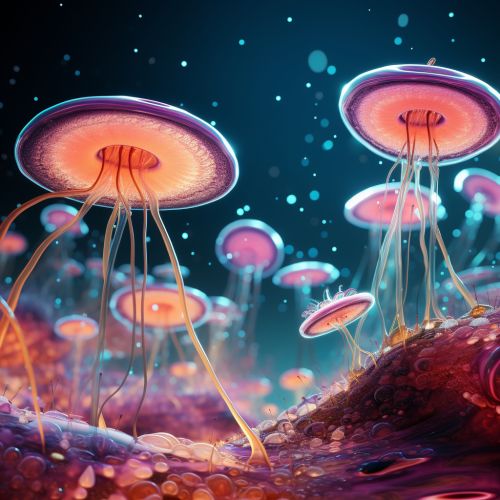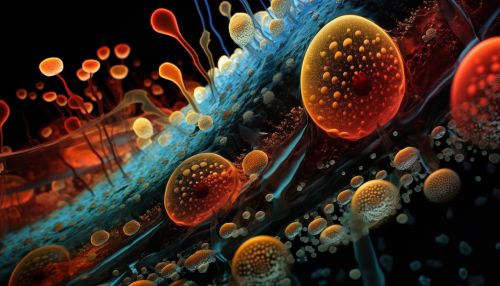Aerotaxis
Introduction
Aerotaxis is a behavioral response exhibited by certain types of bacteria, including E. coli, to oxygen gradients in their environment. This form of taxis involves the movement of an organism in response to variations in the concentration of oxygen. Aerotaxis is a survival mechanism that allows bacteria to navigate towards areas with optimal oxygen concentrations for their metabolic needs.
Mechanism of Aerotaxis
The mechanism of aerotaxis in bacteria is complex and involves several components. The primary component is a set of transmembrane receptors, known as aerotaxis receptors, which are sensitive to changes in oxygen concentration. These receptors are part of a larger system known as the chemotaxis system, which also includes a series of intracellular signaling proteins and flagellar motors.


When the oxygen concentration in the environment changes, the aerotaxis receptors detect this change and transmit a signal to the chemotaxis system. This signal is then relayed to the flagellar motors, causing the bacteria to change the direction of their movement. The bacteria will continue to move in the new direction until the oxygen concentration changes again, at which point the process repeats.
Role in Bacterial Survival
Aerotaxis plays a crucial role in the survival of bacteria in diverse environments. By enabling bacteria to move towards areas with optimal oxygen concentrations, aerotaxis helps these organisms to maximize their energy production and growth. This is particularly important in environments where oxygen concentrations can vary widely, such as in soil or water.
In addition to aiding in energy production, aerotaxis also helps bacteria to avoid potentially harmful conditions. High concentrations of oxygen can be toxic to certain types of bacteria, so the ability to move away from such conditions can be a critical survival mechanism. Similarly, low oxygen concentrations can limit bacterial growth, so aerotaxis can also help bacteria to avoid areas of oxygen scarcity.
Aerotaxis in Microbial Ecology
Aerotaxis also plays a significant role in microbial ecology. By influencing the distribution of bacteria in the environment, aerotaxis can affect the composition and dynamics of microbial communities. For example, in aquatic environments, aerotaxis can lead to the formation of microbial mats, which are layered communities of bacteria and other microorganisms.
Furthermore, aerotaxis can influence the interactions between bacteria and other organisms in the environment. For instance, by enabling bacteria to move towards areas with high oxygen concentrations, aerotaxis can facilitate the colonization of plant roots by rhizobia, which are bacteria that form symbiotic relationships with plants and assist in nitrogen fixation.
Research and Applications
Research into aerotaxis has potential applications in several fields, including environmental science, agriculture, and medicine. For example, understanding the mechanisms of aerotaxis could help scientists to develop strategies for controlling harmful bacteria in the environment or promoting beneficial bacteria in agricultural settings.
In medicine, research into aerotaxis could lead to new approaches for treating bacterial infections. By manipulating the aerotaxis mechanisms of pathogenic bacteria, it might be possible to prevent these organisms from colonizing certain areas of the body, thereby reducing their ability to cause disease.
